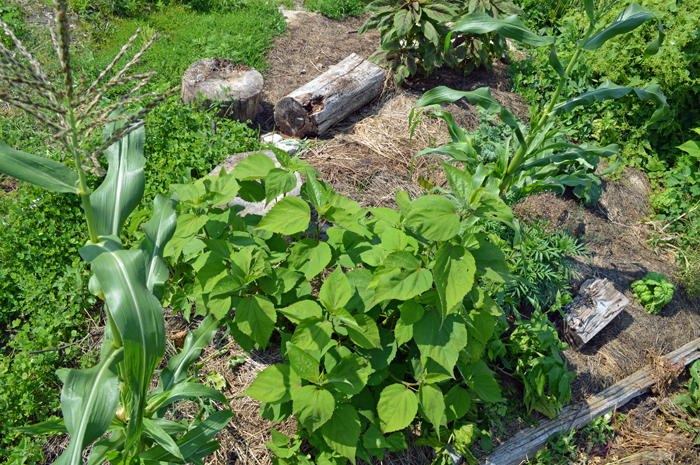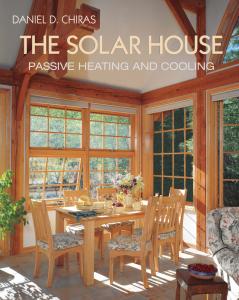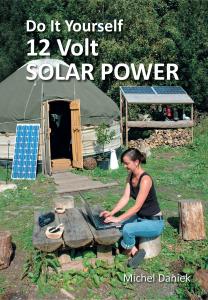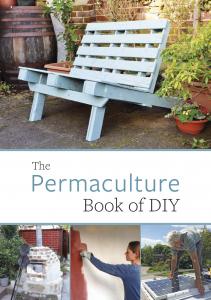 Imagine a diverse, blossoming orchard: succulent serviceberry shrubs ripening in the spring, followed by apple, cherry, pear and plums bursting into fruit through the summer and fall. Many other types of fruit, nuts, and edible leaved plants (like Rose of Sharon) are intermingled with berry shrubs and canes that slowly creep and stretch to catch the sunlight making it through gaps in the canopy of this food forest.
Imagine a diverse, blossoming orchard: succulent serviceberry shrubs ripening in the spring, followed by apple, cherry, pear and plums bursting into fruit through the summer and fall. Many other types of fruit, nuts, and edible leaved plants (like Rose of Sharon) are intermingled with berry shrubs and canes that slowly creep and stretch to catch the sunlight making it through gaps in the canopy of this food forest.
Now imagine the most luscious flower, herb and veggie gardens you can conceive: a multi-coloured palette of flowers, shoots, and leaves blanketing the landscape below and around the trees. Perennial vegetables like sea kale, good king Henry, tree collards, ground plums, and the beautiful musk mallow abound, ready to be put to use in salads and other dishes. There’s room for your favourite annuals like tomatoes and chard here too, which are strategically placed in sunny areas to benefit from the companion plants and wind breaks around them.
Imagine that this edible ecology largely takes care of itself, just like a forest, with minimal human inputs once it’s established. And imagine gardens just like this could be found in city parks, in unused public space, old fields, and in back yards and private property throughout and around the Kawarthas. From small gardens with a couple of berry and nut shrubs with their flower, herb and veggie companions, to organic commercial gardens supplying food for local sale.
For the past 17 years, I’ve been studying, working and playing with such ecologically designed landscapes, and I’ve seen firsthand how they can be not only beautiful, but low maintenance, and highly productive. Here are some of the benefits of such “edible ecologies”:
Low Inputs (Fertilizer, Pesticide, Water) and Low Labour
An ecologically designed landscape substitutes human inputs and labour for natural energy cycles and biological resources in the same way a forest does. Plants receive nutrients, protection from wind and pests, mulch that prevents soil erosion (loss of soil to wind or rain), and everything else they need from the companion trees and plants around them.
Because an edible ecosystem mimics a healthy ecology, little or no pesticides or herbicides are needed to combat ‘pests’ and ‘weeds’. Instead, we can provide enough habitat and required foods that pest predators (e.g. specific birds, lacewings, praying mantes) will stick around and breed, building their populations and keeping their preferred foods (e.g. slugs, potato beetles, some mites) in check. As with pests, weeds are best dealt with using preventative methods, especially by preventing soil disturbance and light penetration (both of which cause weed seeds to germinate) using only very selective tilling (if any), and using a lot of mulch and productive companion plants (e.g. ground covers) to keep unwanted plants at bay.
Such a landscape is also designed to increase soil organic matter content through specialized soil building plants like alder trees and comfrey, which allows for storing more water in the soil, just as in natural ecosystems. A wide diversity of deep roots allow for better water infiltration and nutrient cycling, while a diversity of plants cover the soil and prevent evaporation.
Mental and Physical Health
An edible ecology in any community means more people harvesting and cooking their own food, and connecting with one another. It has long been known that nature connection is extremely beneficial to the psyche, and important to children especially. These landscapes can be specifically designed as safe and natural playgrounds for children.
Aesthetically Pleasing Edible Ecosystem in Your Backyard
An edible landscape is a beautiful thing that can enrich a property, neighborhood, or park, especially if a lot of flowers are designed into the system, which they definitely should be! A lot of flowers ensures that pollinators have enough pollen to keep them coming back even when the main food crops aren’t flowering (plus, there are many edible flowering plants, including some favorite garden flowers like violets and some types of bell flowers and balloon flowers). These landscapes also attract an abundance of wildlife like birds and butterflies, enriching the local environment in too many ways to count, and providing many other benefits that cannot be measured.
Edible Ecosystem in Your Backyard
Ready to turn your property into a low-maintenance, productive food source? Living Landscapes uses ecological design principles to create resilient edible gardens and food forests that mimic nature’s efficiency. Their expertise could help you minimize inputs while maximizing harvests, creating a beautiful and beneficial space.
Discover How Living Landscapes Can Help You Create an Edible Ecology



